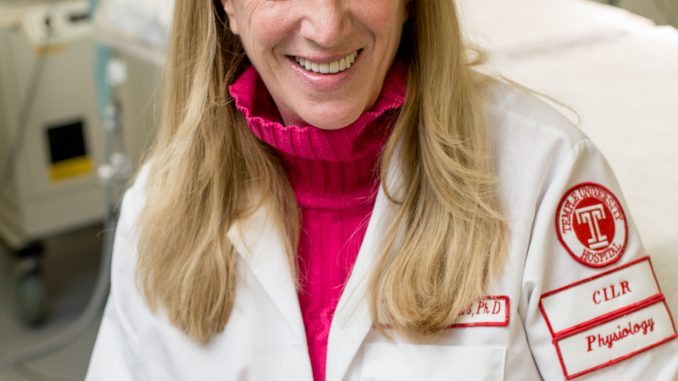
Adriana Mancini embodies the success of Dr. Marla Wolfson’s work.
At the time of her premature birth, Mancini weighed less than two pounds and was administered the chemical perfluorocarbon, which holds three times more oxygen than air, to help her breathe. This was a main focal point of Wolfson’s research.
Mancini graduated from college last year.
“I feel fortunate to see a number of our developments to hit the bedside,” Wolfson said. “Not everyone can say that is the result of their research.”
Wolfson received her bachelor’s of physical therapy in 1975, master’s of physiology in 1982 and Ph.D. in respiratory physiology in 1985. She completed her postdoctoral fellowship at St. Christopher’s Hospital for Children and Lewis Katz School of Medicine. Wolfson is now a professor of physiology, pediatrics and medicine at the school.

Wolfson has 14 patents, one of the largest patent portfolios at Temple. A patent portfolio is intellectual property that the creators would like to continue to research, but they need to secure it to lock down funding, she said.
“It’s a way of expediting an idea from the bench to the bedside,” Wolfson said. “When [the] industry is interested in your ideas, they need to have some protection so they can get return on their investment. They get protection of the idea as they put in more and more funds.”
Wolfson first received a patent in 2012, when she used perfluorochemical — which inflates the lungs during low-pressure situations — to treat altitude-related health problems in the lungs.
Wolfson’s research on the chemical was featured in the New York Times in 1989 and contributed to several medical textbooks. Wolfson’s research has received grants adding up to about $4.5 million.
“The main goal is to make sure the highest amount of drugs goes into the lungs instead of missing the target,” Wolfson said.
Wolfson developed the portfolio in collaboration with Thomas Shaffer, a professor emeritus of physiology and pediatrics. Shaffer has been working with Wolfson since she was a graduate student during the late 1970s and early ’80s.
Out of 46 graduate students and 50 fellows at Lewis Katz School of Medicine, Shaffer said Wolfson was one of his most successful students.
“I give her a lot of kudos to innovative work with patent portfolios,” he added. “She puts in a lot of work to bring her work to the bedside.”
Wolfson also helped develop the use of helium gas in ventilators, instead of the traditional gas mixture used, to treat lung injuries in premature infants.
Now, Wolfson is researching the development of different therapeutic techniques for the prevention of chronic lung disease, a condition caused by damaged tissue in the lungs that leads to difficulty breathing, in premature infants.
After working in the medical field for more than 40 years, Wolfson said she’s still inspired to keep creating and inventing. “The inspiration for all of this is to more effectively treat patients,” she said. “Whether it’s therapeutic or economic. To reduce the burden and improve their quality of life.”
Eileen Wickline can be reached at eileen.devlin.wickline@temple.edu.


Be the first to comment